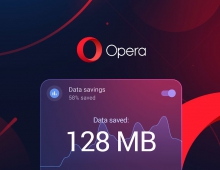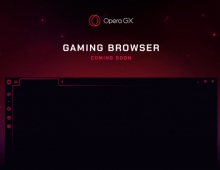
Opera 12.10 for Desktop Released With More Add-ons
Today, Opera launched the final version of Opera 12.10, a more personalized browser featuring better, more integrated extensions.
Extensions, combined with Speed Dial's overview of favorite sites and shortcuts, give users more of their favorite content faster and easier. For example, users' Facebook pictures can appear in the Speed Dial entry for Facebook, the latest shared fashion trends on Pinterest appear automatically and the weather forecast is always present without having to visit the weather website. In addition, the new Speed Dial extensions for Facebook and Twitter offer users Facebook and Twitter feeds, while with the Gmail and Google Calendar extensions, users are able to check their emails without typing a single address in the address bar.

For developers, Opera 12.10 introduces the Context Menu API, which allows them to add extended usability to the context menu (what most people call the right-click menu) - for example, start a Tweet by right-clicking a link. The Resource Loader API also lets web developers have their extensions interact with CSS and JavaScript on webpages.
Opera has also worked in improving the browser in ways that might not be that visible to the everyday user. The new browser supports features such as Notification Center in the newest version of Mac OS X and supports the Retina Screen in newer Macs. With the new version of Mac OS X, called Mountain Lion, Opera 12.10 uses the built-in sharing functionality to e.g. share a cool site on Twitter or via email.
Built-in support for the SPDY protocol also improves and secures connections. Gmail and Twitter have already started using SPDY to supplement the HTTP protocol.
The WebSocket API is supported and turned on by default in Opera 12.10. Opera now also supports ICC color profiles and color management.
Support for Flexbox and @supports gives website developers more control of how their website appear in the end users' browsers.
Last but not least, the latest Opera desktop browser offers basic touch support in Windows 8 classic and pinch-to-zoom support in Windows 8.
The final version of Opera 12.10 is available from www.opera.com.

For developers, Opera 12.10 introduces the Context Menu API, which allows them to add extended usability to the context menu (what most people call the right-click menu) - for example, start a Tweet by right-clicking a link. The Resource Loader API also lets web developers have their extensions interact with CSS and JavaScript on webpages.
Opera has also worked in improving the browser in ways that might not be that visible to the everyday user. The new browser supports features such as Notification Center in the newest version of Mac OS X and supports the Retina Screen in newer Macs. With the new version of Mac OS X, called Mountain Lion, Opera 12.10 uses the built-in sharing functionality to e.g. share a cool site on Twitter or via email.
Built-in support for the SPDY protocol also improves and secures connections. Gmail and Twitter have already started using SPDY to supplement the HTTP protocol.
The WebSocket API is supported and turned on by default in Opera 12.10. Opera now also supports ICC color profiles and color management.
Support for Flexbox and @supports gives website developers more control of how their website appear in the end users' browsers.
Last but not least, the latest Opera desktop browser offers basic touch support in Windows 8 classic and pinch-to-zoom support in Windows 8.
The final version of Opera 12.10 is available from www.opera.com.





















